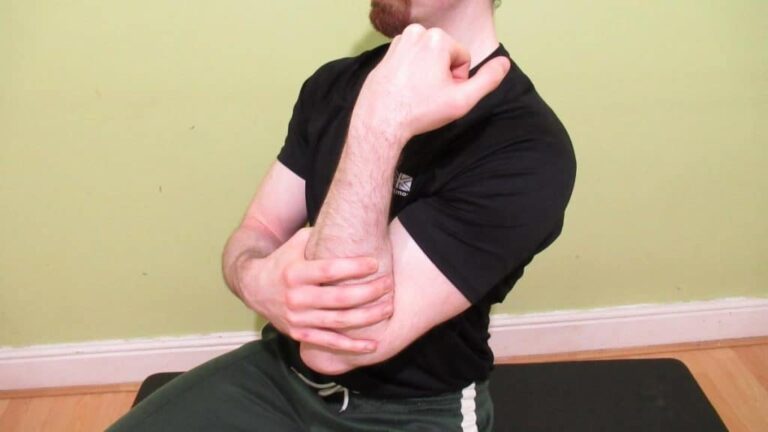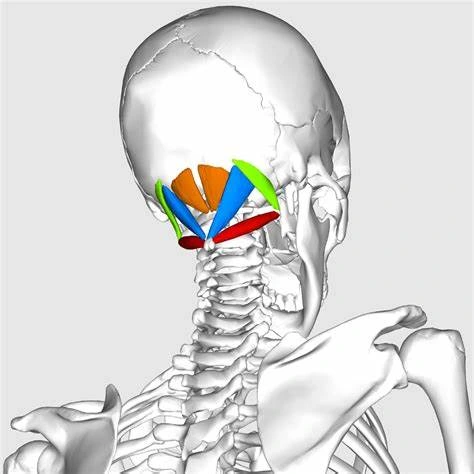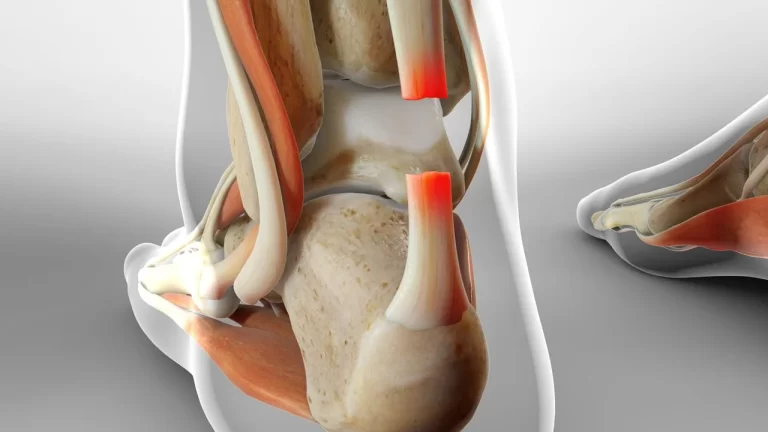Pectoralis major muscle strain
Table of Contents
What is Pectoralis major muscle strain?
- A Pectoralis major strain refers to a tear in the large muscle which protects the chest. A pectoralis major strain generally occurs when the muscle is forcibly contracted whilst in a stretched position. This can occur during weight training when doing bench press exercises.
- When the bar is lowered, the pectoralis major muscle is stretched over the chest. In this position, overstretching of the power combined with the need to create high muscle forces to lift and lower the bar may place too much stress on the muscle. The muscle subsequently tears. Collision sports and wrestling are other activities where this can occur. Physiotherapy may help to treat symptoms of pectoralis major strain.
Where is the Pectoralis major muscle located?
Origin:
Clavicular part: anterior surface of sternum
Sternocostal part: the first 7 costal cartilages, the sternal end of the sixth rib
Abdominal part: the aponeurosis of the external oblique of the anterior abdominal wall
Insertion:
Crest of the greater tubercle sulcus of the humerus
Action:
Shoulder joint: Arm flexion (clavicular head), arm extension, Arm adduction, Arm internal rotation (sternocostal head);
Scapulothoracic joint: Draws scapula anteroinferior
Cause of Pectoralis major muscle strain
- Muscle strain will occur either from injuries or trauma. this will result to:
- Not warming up properly before physical activity
- Poor flexibility
- Poor conditioning
- Overexertion and fatigue
- Weakness
Symptoms of a pectoralis major strain
- The first feeling felt when the pectoralis major muscle is torn is sudden pain. This pain is usually felt at the front of the armpit and is sometimes felt over the chest. At the same time, you may also feel something ‘tearing’ in your chest. In minor tears, you may be capable to continue to participate with slight pain.
- However, as the muscle cools down, pain may slowly worsen as bleeding and swelling over the injured muscle takes place. The pectoralis major often becomes tight and stiff.
Other symptoms include:
- Reduced range of motion
- Swelling/inflammation
- Stiffness
- Weakness
- Muscle spasms
- Sharp or dull pain
- Difficulty moving the affected area
- Bruising
Pectoralis major muscle strain classification
- Grade 1 will lead to a small amount of muscle injury resulting in some pain and discomfort but still having a full function.
- Grade 2 Significant tissue injury leading to a moderate loss in motion is a Grade 2 pectoralis major strain.
- Grade 3 muscle strains will be the muscle fibers that have been torn resulting in a full rupture and major loss of function.
Diagnosis of pectoralis major muscle strain
Diagnosis is generally made based on history and examination. If there is concern that the strain is high grade an MRI will generally be requested.
Ultrasounds may be performed but are less information for pectoralis tears than for other injuries.
Assessment
Subjective assessment
History with associated symptoms
Mechanism of injury
Inciting trauma direction and magnitude of injury force
Repetitive trauma-faulty postural-related injuries
On objective assessment, there will be:
Muscle Tenderness- to touch at the point of injury
Swelling
Bruising may appear within hours or days
Stretching of the muscle will reproduce pain
Treatment of Pectoralis major strain
Treatment of Plantaris strain depends upon the severity of the injury, Doctor examines you, according to the severity, the conditions, and the assessment plan a treatment.
The most significant time in the initial treatment of a pectoralis major strain is the first 24 – 48
hours. This is when the increase of bleeding and swelling around the injured muscle occurs. To control the amount of swelling and, therefore, limit the stage of injury to the pectoralis muscle, the muscle should be treated rested and iced.
If the patient has grade 1 and grade 2 muscle strains then the patient should rest, apply ice and take painkillers. grade 1 and grade 2 muscle strains take 3 to 6 weeks to recover. Patients with grade 3 muscle strain should undergo surgery. grade 3 muscle strain takes around 12 weeks to recover.
Medical Treatment
For immediate
- Some therapists suggest avoiding inimical pain medicines that can extend your threat of bleeding — similar to over-the-counter (OTC) medicine (naproxen sodium (Aleve) aspirin and ibuprofen (Advil, Motrin IB), — during the first 48 hours after a muscle strain. Acetaminophen (Tylenol) and others can be helpful for pain relief during this period.
- A physiotherapist can help you to increase the strength and stability of the injured joint or limb. Your doctor may suggest that you stabilize with a brace. For some muscle injuries, pectoralis major muscle sprint surgery may be called.
To prevent swelling and pain as first aid by following RICE principal
- R- rest
- I- ice for cooling
- C- compression tapping and splinting
- E- elevation
the R.I.C.E approach
- Rest. Avoid activities that cause pain, swelling, or discomfort. don’t avoid all physical activity.
- Ice. Though you are seeking medical facilities, ice the world right away. Use an associate degree ice pack or slush tub of ice and water for 15 to 20 minutes every time occasion anytime and repeat every 2 to 3 hours. In contrast, you are awake for the primary few days once the injury.
- Compression. To assist stop swelling, compress the world with an associate degree bandage till the swelling stops. do not wrap it too tightly otherwise, you might hinder circulation. Begin wrapping at the top farthest from your heart. Loosen the wrap if the pain increases, the space becomes numb or swelling is going on below the wrapped area.
- Elevation. Elevate the burned space on top of your heart’s extent, particularly at midnight, which permits gravity to assist scale back swelling.
Physiotherapy treatment in Pectoralis major strain
The aim of activity treatment is
- Decrease pain in the affected area,
- Reduce muscle swelling
- Allow time for the tissue to undergo the healing process and decrease ongoing stress on the pectoralis major muscles.
- Improve full pain-free range of motion in the shoulder.
- Restore full functional activities.
Phase one: one to two weeks
Physiotherapy rehabilitation can be started after 48 hours of injury, For the first few days give an electric modality give to relieve swelling and pain
Ultrasound
Ultrasound has been used for tissue healing
Improve blood circulation and mobility.
To reduce swelling and pain
Cryotherapy
Inflammation and swelling can be decreased by applying cryotherapy in form of ice packs, and cold water baths to the injured area. Continuous application of cold 3 to 4 times a day for 15-30 minutes at a time is recommended.
TENS
Transcutaneous electrical nerve stimulation (TENS) may be able to help decrease pain and muscle spasms.
Phase two: three to six weeks
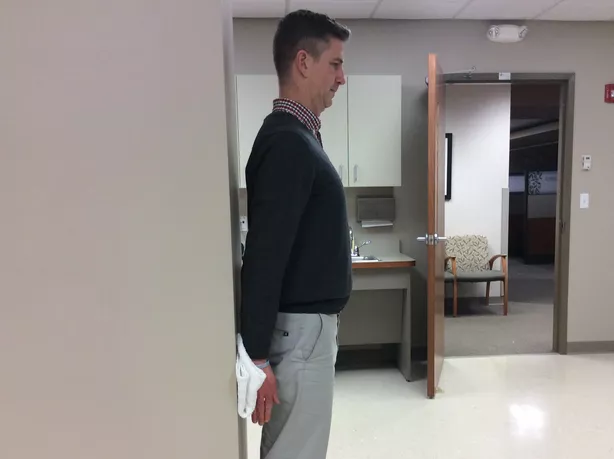
First few days start pain-free mild to moderate exercise
- Shoulder Extension( Isometric)
Stand with your back against the wall and your arms straight by your sides.
Reaming your elbows straight, push your arms back into the wall. Hold for 10 seconds, and then relax.
Repeat 10 to 15 times.
Do it 3 times a day.
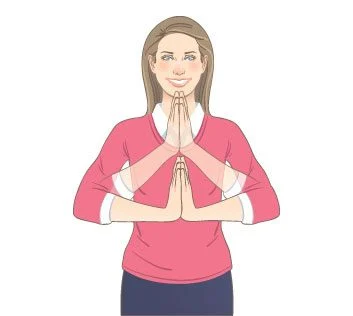
2) Prayer Press
The isometric chest press is usually done sitting or standing. start by pressing your hands in front of your chest in a prayer position.
Remain your elbows at 90-degree angles. gives as much pressure between your palms as you can do,
Hold for 10 to 15 seconds, then relax for 5 seconds.
Do 10 to 15 repetition
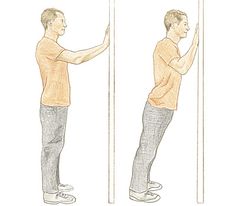
3) Wall Push- Up
Place your palm on the wall at shoulder height together with your body tilting inward at a slight hang.
Your feet should be securely placed on the floor.
Gripping shoe soles could also be required to avoid sliding.
Do pressure through your arms, chest, and hands as if you’re trying to push the wall away, pulling your shoulder blades down as you press.
To make the exercise more difficult, lower your hands to close the waist level.
Do10 to 15 repetition
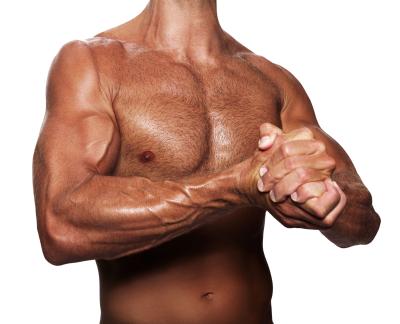
4) Chest Press
When you hear” chest press”, you probably think of an activity done on a machine or with free weights, but an isometric chest press requires nothing else than your own two arms to apply. You sit with your back straight or stand upright and hold your hands together, holding them up ahead of your chest level. Press them against each other with as much pressure as you can while flexing your pectorals.
Hold this position for 10 to 15 seconds before relaxing for 5 seconds.
Do 3 sets of 10 to 12 reps, with a 2-minute rest between sets.
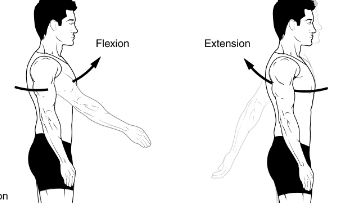
5) Shoulder flexion and extension
A shoulder flexion is when you move your arms upward from a resting position by your sides to straight above your head.
An extension is when you move your arms and take them out behind you.
6) Scapular protraction
Protraction of the scapula is also called abduction of the scapula.
The scapula is moved laterally and anteriorly along the chest wall.
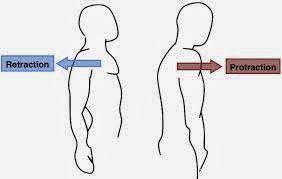
Pectoralis major muscle stretching exercise
After pain relieving perform the minor pain-free stretching exercises.
1) Pectoralis major muscle stretch
Shoulders at 90°, reaming weight on feet,
Lean forward and squeeze your shoulder blades together.
Hold for 10 to 15 seconds.
Do 5 times
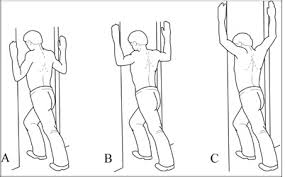
2) Shoulder flexion stretch
Stand facing a wall.
Slowly walk your fingers up the wall up to you feel a stretch.
Hold the stretch for 20 seconds.
Back to the normal position.
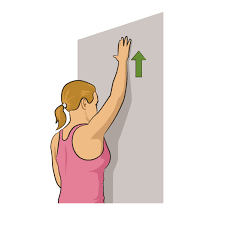
Phase three: six to twelve weeks
1) Rowing exercise
Tie an elastic band around a fixed object and grasp the ends in each hand.
Remain your forearms upright and your elbows at shoulder level and bent to 90 degrees.
Pull revers on the band and squeeze your shoulder blades together.
Repeat the 10 to 15 times

2) Incline push-up
Start together with your hands on the wall or a desktop-height surface. Walk your feet backside
so that your body makes roughly a 45-degree angle with the ground.
Remain your body straight and your spine neutral position, and lower your chest to the surface you’re tilting against.
Pause for a flash, then return to the starting position.
Do 10-12 repetitions
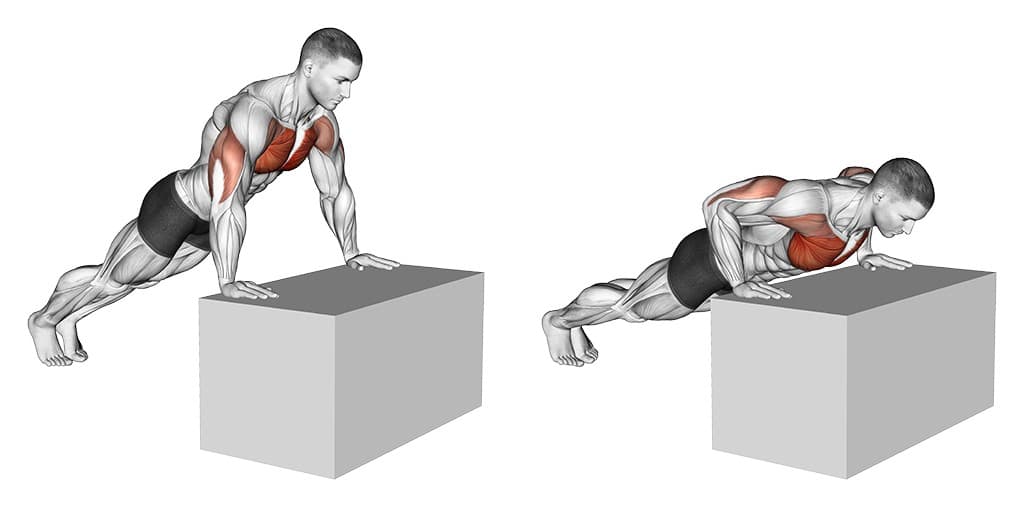
3) Arms slide on the wall
Stand ahead with your back against a wall and your elbows and wrists against the wall.
Slowly slide your arms upward as high as you’ll while keeping your elbows and wrists against the wall.
Do 15 to 20 repetition
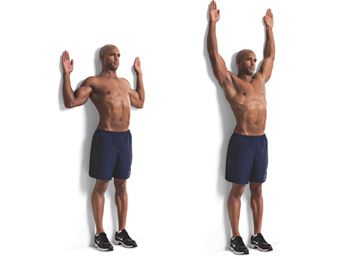
4)Flat bench press
lie on Your back on the bench with your knees bent and feet flat on the ground. Grasp the dumbbell, together with your thumb holding around the dumbbell and palms facing toward your feet.
Press your arms straight near the ceiling to lift the Bending your elbows down at a 45-degree angle, slowly down the slide to your chest.
Remain the dumbbell approximately in line together with your chest level.
Pause for a flash, then press the load to return to the start position.
Complete 3 sets of 10 to 12-repetition
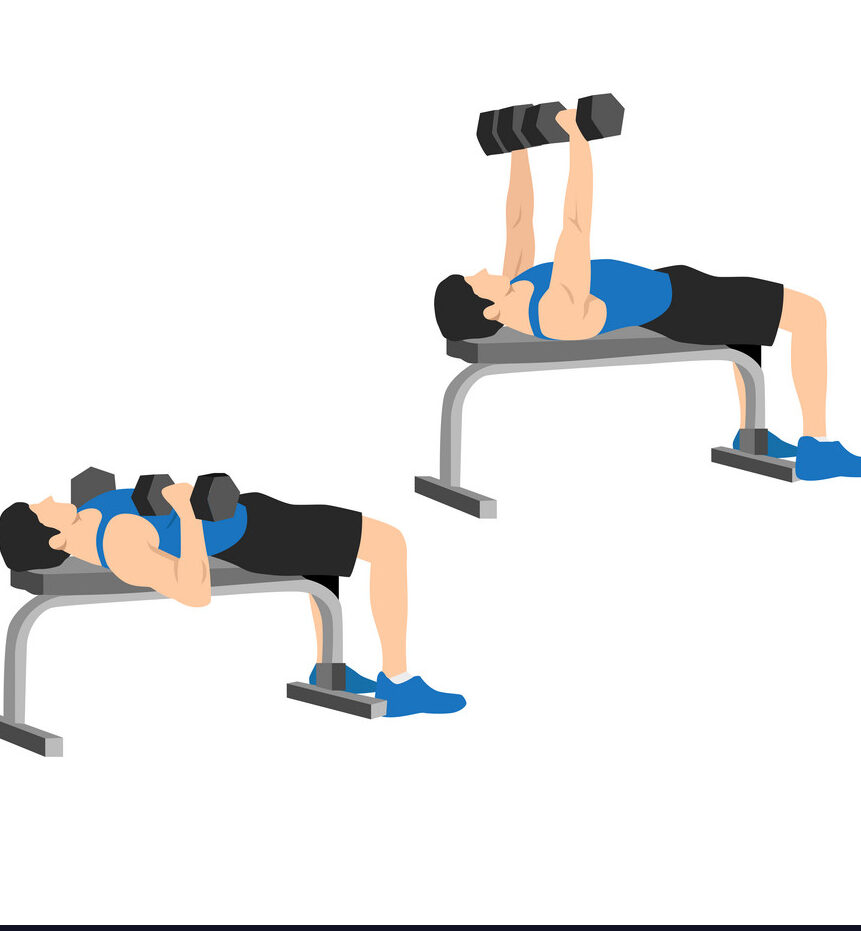
5)Resistance band pullover
You are, sitting on your back with your head toward the theraband attachment point.
The band is placed about 1 – 2 feet higher than your head.
Then Grasp the band above so that there’s slight pressure on the band.
Must be Keep your thumbs pointing to the sky, your palms facing away from each other.
keep your core muscle tight and elbow straight.
Pull the band toward your hip.
Then return to the normal position.
Do 10 to 15 repetition

6)Resisted External Rotation:
Sit or stand, theraband in both hands, elbows at sides, bent to 90°, forearms forward.
Pinch shoulder blades together and rotate forearms out. remain elbows at the sides.
Hold for 10 to 20 seconds.
Do 5 times per set
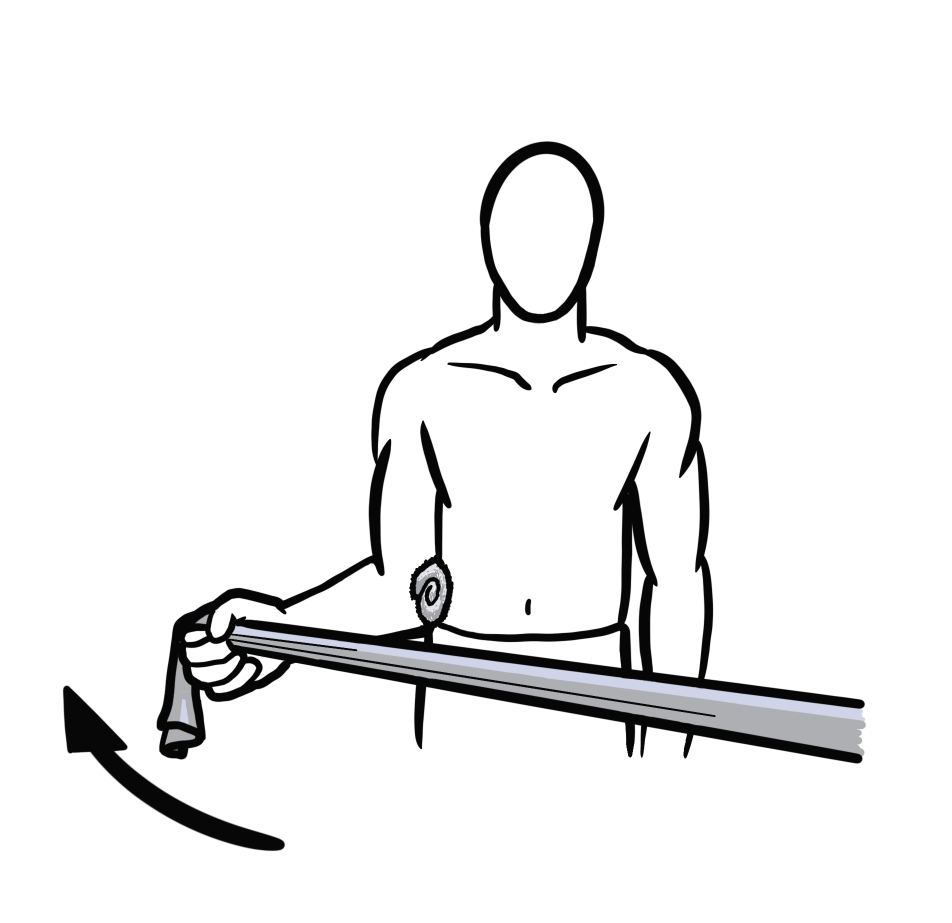
7)Push up
Go down in a prone position, placing your hands slightly wider than your shoulders.
Straighten your arms and legs.
Lower your body throughout your chest and nearly touches the floor.
Pause, then push your body back to its normal position.
Do 10 to 20 Repetitions.

How to Prevent Pectoralis major strain?
- Do the proper warm-up before some exercises or sporting activities.
- Stretch after exercising or playing sports
- Avoid immediate intense strength training and build strength gradually
- Do Regular stretching and strengthening exercises for your sports, fitness, or work exertion, as a part of your overall physical activities
- An exercise program can help to minimize your danger of muscle strains.
- Try to be in shape to play your sport; don’t play your sport to get in shape.
- If you have a physically demanding occupation, regular exercise can help to help injuries.
- Follow a healthy diet and an exercise program to maintain a healthy weight. The overweight can put added pressure on the muscles, making muscle strains again probable to do
FAQs
- 1. How do you treat a pectoralis major strain?
Physiotherapy treatments can be quite effective in reducing pain after injury and in
reducing damaging postural effects. Ice is used on an acute muscle strain that is still inflammatory, but eventually, ift or tens can be used to improve blood flow to the muscle and help the tightness relax. - 2. What does a pectoralis major strain feel like?
The first sensation felt when the pectoralis major muscle strain is sudden pain. This pain is generally felt at the front of the armpit and is sometimes felt across the chest. At the same time, you can also feel something ‘tearing’ in your chest. In grade 1 strain you may be able to continue working with slight pain.
- 3. How do you know if you strained your Pectoralish major muscle?
Immediate pain at the time of injury.
Bruising around the chest.
Swelling around the chest.
Loss of strength and range of motion in the arm. - 4. Can you still work out with a strained pec?
You should avoid difficult exercise, like heavy lifting, while you’re in recovery. As your pain lessens, you may slowly back to your previous activities and sports. Pay attention to any
ache or other symptoms you experience and rest when necessary. Your recovery time
depends on the severity of your strain - 5. Which exercise is used for pectoralis major muscle strain?
In Acute injury, you shoulde require rest so muscle can heal properly, After few days REST, You should started gradual Active to strengthening and strengthening exercise under guidence of Physical therapist, following exercise may helpful but never start in acute phase of injury.Chest press
Prayer press
Scapular protraction
Shoulder flexion
Incline push up


